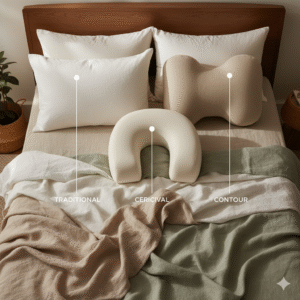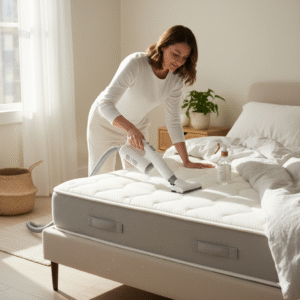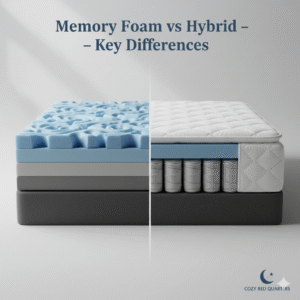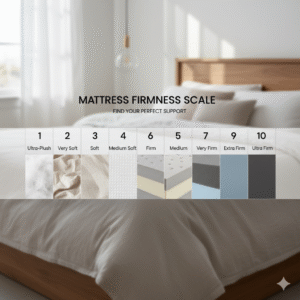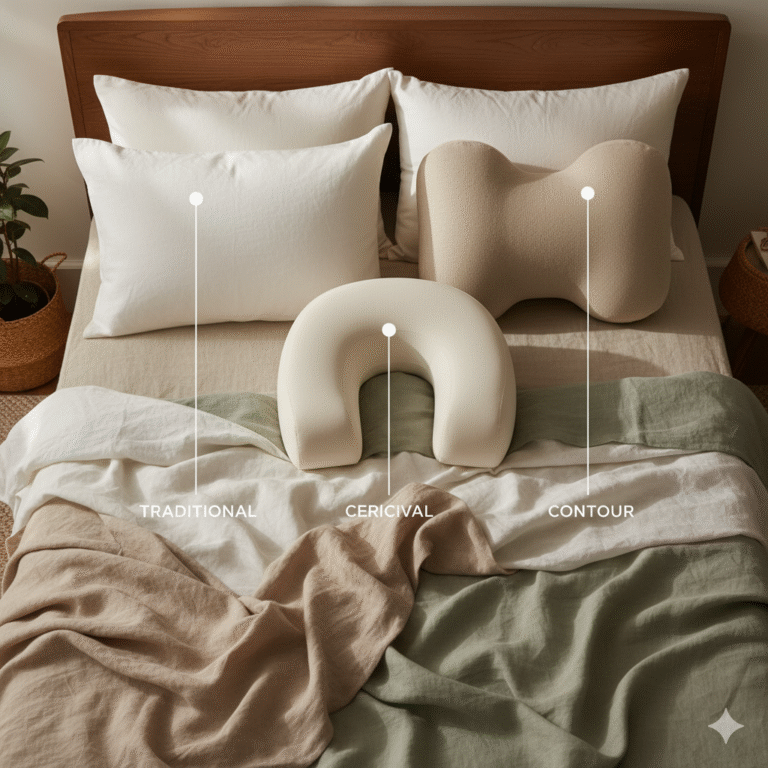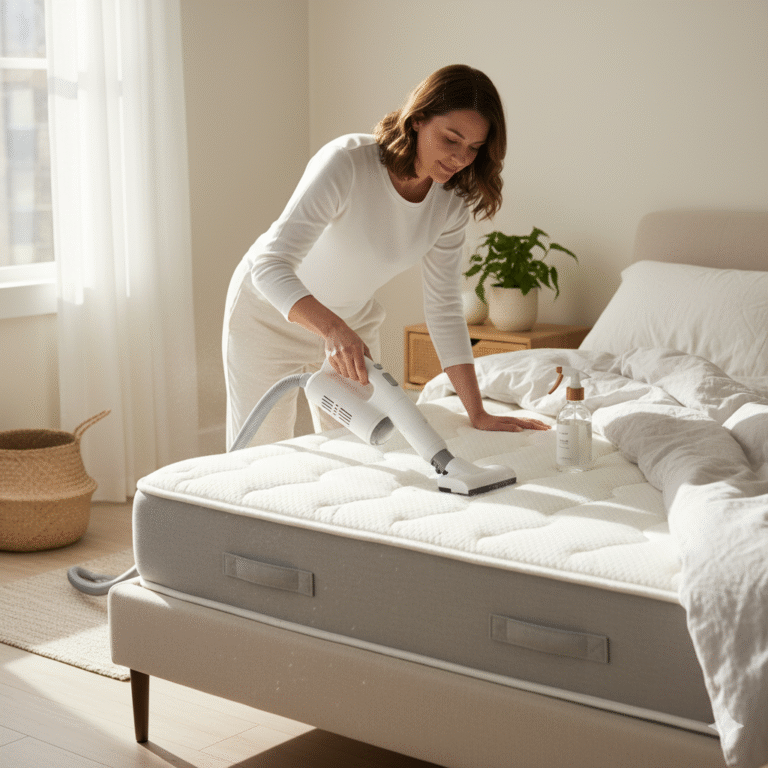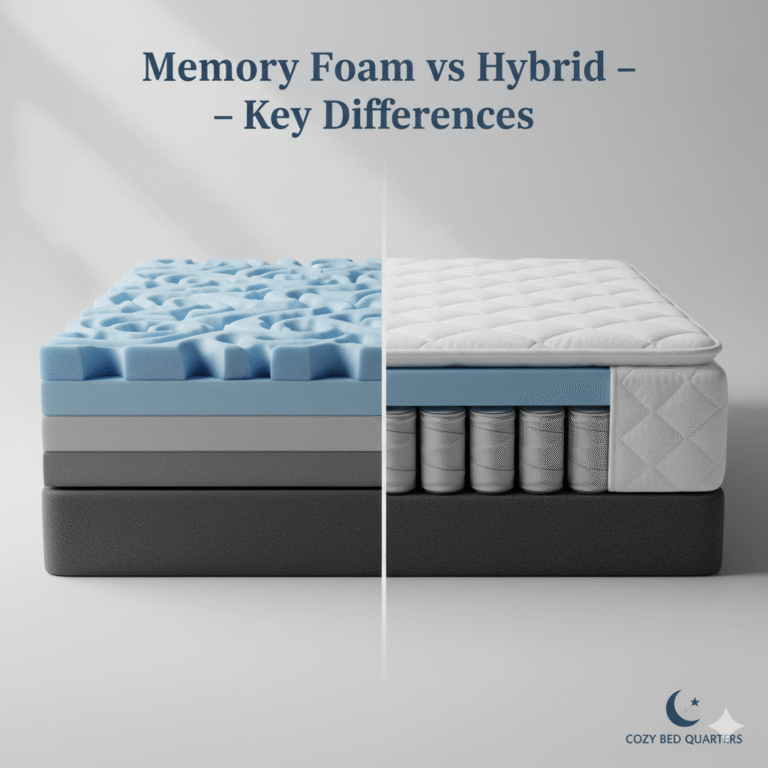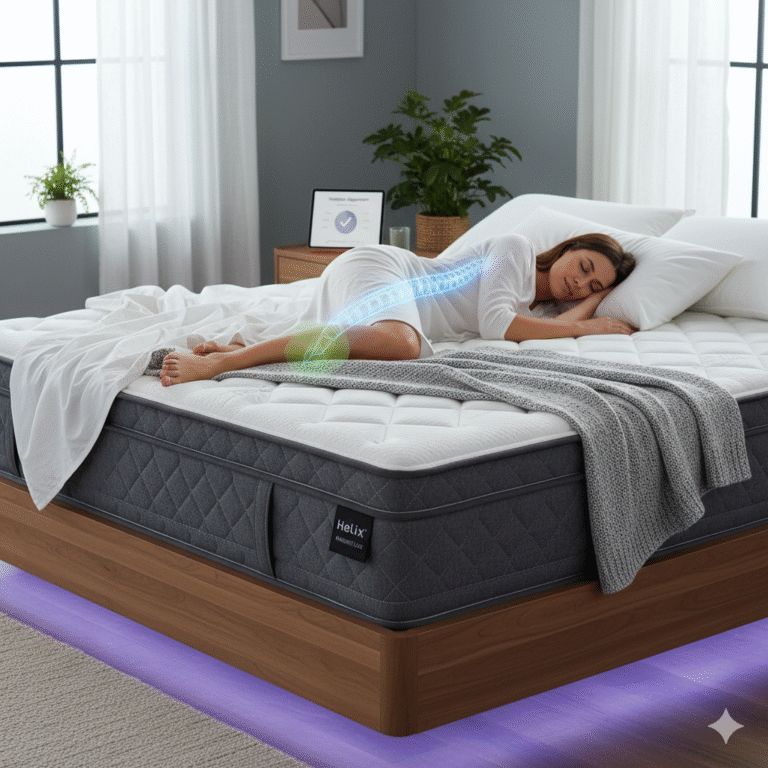Memory Foam Mattress Benefits: Ultimate Comfort for Restful Sleep
Memory foam mattress benefits include personalized contouring,
pressure relief, and excellent motion isolation—so you fall asleep faster and wake up with fewer aches.
If you want a mattress that adapts to your body and sleeping style, memory foam is one of the most
reliable choices for deeper, more restorative rest. For more ways to improve rest and relaxation,
see our guide on meditation for kids, which can help establish bedtime calm for the whole family.
Key Takeaways on Memory Foam Mattress Benefits
- Contours to your body for better spinal alignment and comfort.
- Relieves pressure points at the shoulders, hips, and lower back.
- Great for couples thanks to industry-leading motion isolation.
- Durable and hypoallergenic with multiple firmness options to fit your sleep style.
- Modern cooling designs help hot sleepers maintain a comfortable temperature—pair with temperature-regulating bedding for maximum benefit.
- Low maintenance with removable, washable covers on many models.
I was amazed to discover just how versatile memory foam mattresses are—especially their ability to adapt to body temperature!
Most people have no idea of the numerous features that make these mattresses a popular choice. In this article, we’ll
explore the remarkable features of memory foam mattresses and how they can enhance your sleep experience.
1. Temperature Sensitivity
Summary: Memory foam softens with body heat, allowing it to mold precisely to your shape for a custom feel right when you lie down.
One of the standout features of memory foam mattresses is their temperature sensitivity.
When you lie down, the foam softens in response to your body heat, allowing it to contour perfectly to your shape. This unique property provides
customized support that can relieve pressure points and enhance comfort. For more on how comfort impacts kids’ sleep patterns, see our article on
kids’ sleep psychology and meditation stories.
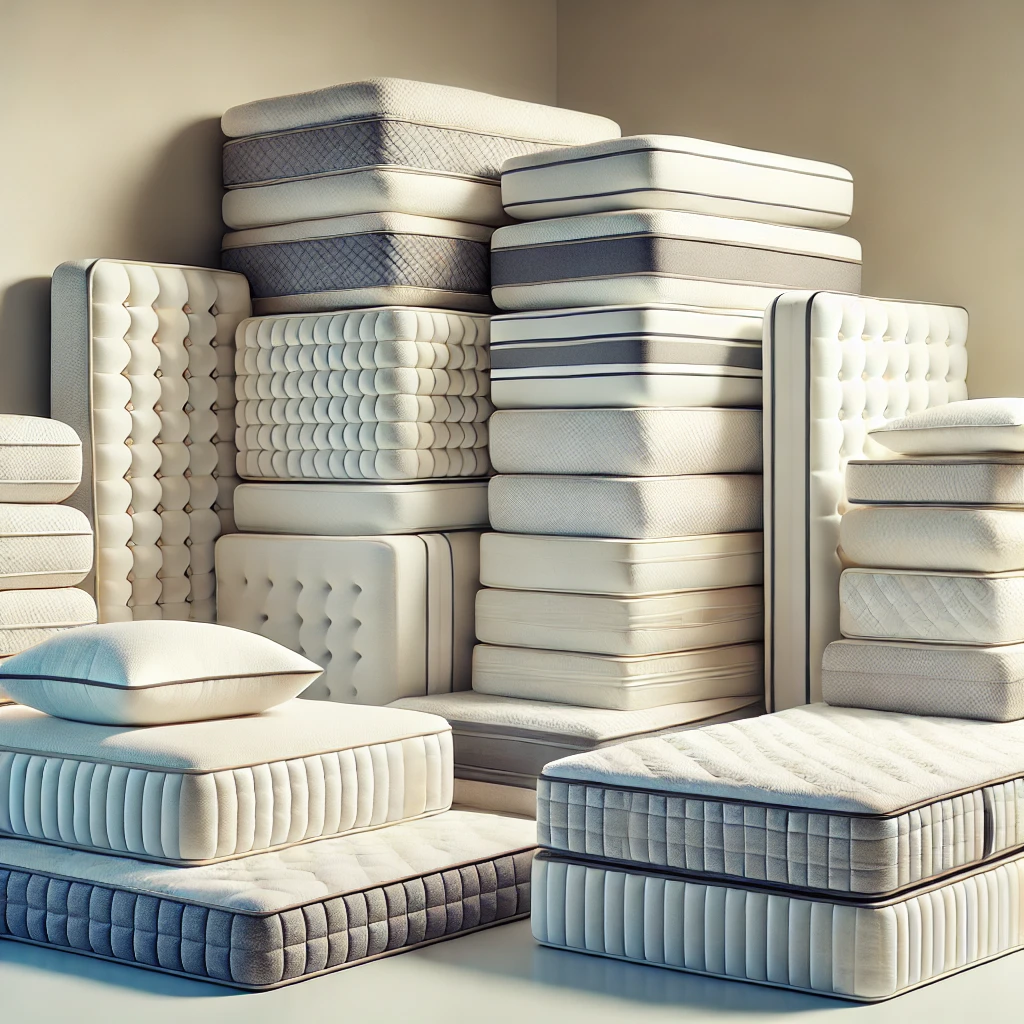
2. Contouring Support
Summary: The foam follows your natural curves to keep your spine aligned and reduce morning soreness.
Memory foam is designed to conform to your body’s natural curves, providing optimal spinal alignment. This contouring support can significantly
improve your overall comfort while you sleep, making it an excellent choice for those with back pain or other discomforts. Learn more in our in-depth guide on
memory foam mattress comfort and benefits.

3. Pressure Relief
Summary: Even weight distribution eases hotspots at the shoulders and hips—especially helpful for side sleepers.
One of the key benefits of memory foam mattresses is their ability to distribute weight evenly across the surface. This feature helps to alleviate
pressure on sensitive areas, such as the hips and shoulders, reducing the likelihood of waking up with aches and pains. Especially for side sleepers,
the pressure relief provided by memory foam can lead to significantly improved sleep quality.
4. Motion Isolation
Summary: Partner moves less, you feel less—good news for light sleepers.
Memory foam mattresses excel at isolating motion, making them ideal for couples. If one person shifts or gets up during the night, the other is less
likely to feel the movement, allowing for uninterrupted sleep. The foam absorbs motion, ensuring that your sleep remains undisturbed and tranquil.

5. Durability of Memory Foam
Summary: Quality foams resist sagging and support you for years when properly cared for.
High-quality memory foam mattresses are known for their durability. When properly cared for, they can last for many years without losing their
supportive properties, providing a long-term sleep solution. Unlike traditional innerspring mattresses that may sag over time, memory foam maintains
its shape and support—making it a wise investment for your sleep health.
6. Hypoallergenic Properties
Summary: Dense foam structure helps resist common allergens for a cleaner sleep surface.
Memory foam mattresses are naturally resistant to allergens like dust mites and mold, making them a great choice for allergy sufferers.
This hypoallergenic quality contributes to a cleaner, healthier sleeping environment. If you’re sensitive to allergens, a memory
foam mattress
can help create a more comfortable and safer sleep space.
7. Firmness Options
Summary: You can choose soft, medium, or firm profiles to match your preferred feel and sleep position.
Memory foam mattresses come in various firmness levels, allowing you to choose the one that best suits your sleeping style.
Whether you prefer a softer or firmer mattress, there’s likely a memory foam option that will meet your needs. Many manufacturers offer different models
with varying levels of firmness, so it’s helpful to try a few options to see which feels best for you.
8. Cooling Memory Foam Technology
Summary: Gel infusions and open-cell designs promote airflow to help hot sleepers stay comfortable.
Many modern memory foam mattresses now incorporate cooling technologies to enhance breathability. These innovations help regulate temperature,
ensuring that you stay comfortable throughout the night, even if you tend to sleep hot. Some mattresses are infused with gel or made with
open-cell structures that promote airflow—great for sleepers who might otherwise overheat. For a complete cooling sleep setup, consider
temperature-regulating bedding.
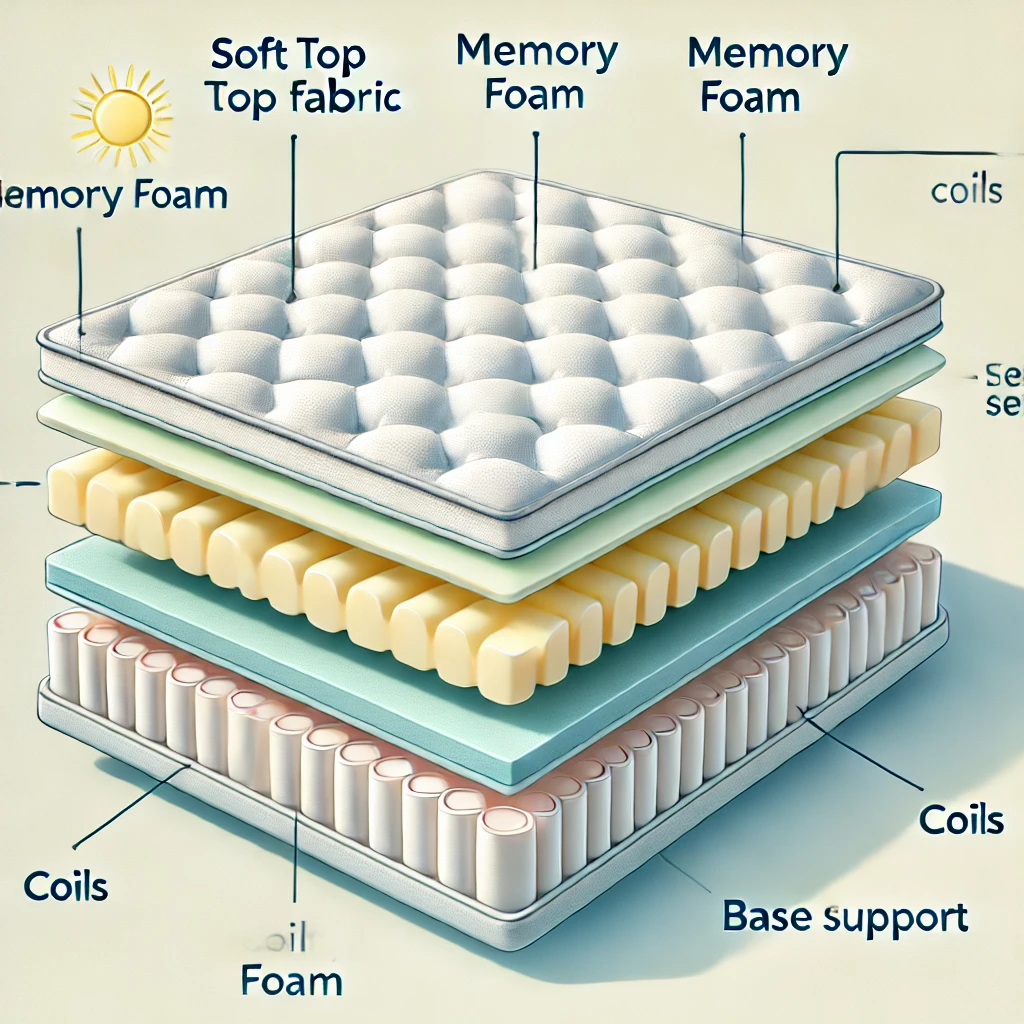
9. Easy Maintenance
Summary: Removable, washable covers and simple care keep your mattress feeling fresh.
Memory foam mattresses typically require less maintenance than traditional mattresses. Most models come with removable and washable covers,
making it easy to keep your sleeping surface clean and fresh. Regularly washing the cover can help reduce allergens and maintain a hygienic
sleep environment, allowing you to enjoy your mattress for many years to come.
10. Final Thoughts
Summary: If you want custom-contouring comfort with great pressure relief and low motion transfer, memory foam is hard to beat.
Memory foam mattresses offer a variety of features that can greatly improve your sleep experience. From their ability to adapt to body temperature and
contours, to pressure relief and motion isolation, they deliver a supportive, comfortable feel for many sleepers. For specific model picks and guidance,
check our curated list of the year’s top performers here:
Best Memory Foam Mattresses 2024.
FAQ
- Are memory foam mattresses good for back pain?
- Yes. Their contouring support promotes better spinal alignment and relieves pressure on the lower back—many back and side sleepers report
less morning stiffness. For model ideas, see our
best memory foam mattresses. - Do memory foam mattresses sleep hot?
- Older foams could trap heat, but today’s designs often use gel infusions and open-cell structures to encourage airflow. If you’re a hot sleeper,
look for mattresses marketed with dedicated cooling memory foam technology. - How long does a memory foam mattress last?
- With proper care, quality memory foam can provide consistent support for many years. Use a breathable protector and rotate head-to-foot a few times
per year to promote even wear. - Is memory foam hypoallergenic?
- The dense foam structure helps resist dust mites and mold, which can support a cleaner sleep environment. Pair your mattress with a washable cover
and follow routine cleaning to maximize benefits. Learn more about how better sleep supports cognition in our guide on
sleep quality and memory retention.


